- [课程通道] Gene Interference and Cat Allergen Silencing Research Project
- [课程通道]
- [科学少年] 2025-10-05
- [科学少年] 2025-10-02
- [科学少年] 2025-10-01
Want to Research This Year's Nobel Prize in Physiology or Medicine in the Lab? 爱博物 2025-09-24
Seeing microRNA win the prize, students who have taken the Nanomedicine Delivery project should be very familiar with this. This was content we emphasized heavily in class.
Who would have thought that while studying the 2006 Nobel Prize-winning technology of RNA interference, we were also learning the 2024 Nobel Prize-winning technology? It's somewhat surprising.
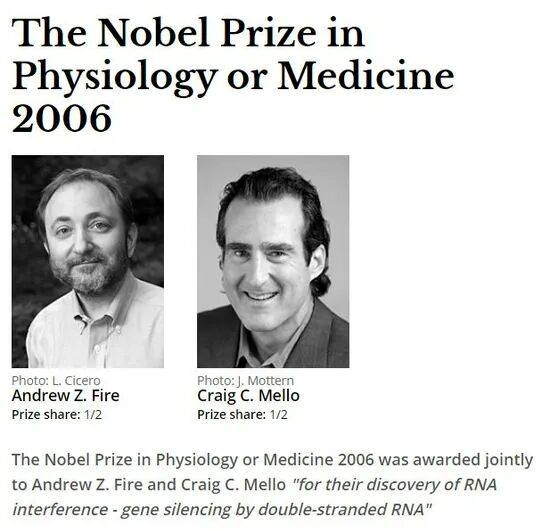
So, what is the connection between these two Nobel Prizes? Why did this field win the Nobel Prize again?
Today, for students who haven't taken the Nanomedicine Delivery project, we'll provide a simple science popularization combining the 2006 Nobel Prize for RNAi and this year's prize for microRNA. If you find this topic interesting, you are welcome to sign up for our Christmas/Winter Vacation Nanomedicine Delivery project. Spots are limited!
【2024 Christmas & Winter Vacation】 mRNA Vaccine Nanomedicine Delivery R&D Customized Research Project
First, we must start with the Central Dogma.
Speaking of this, it reminds me of a point I discussed with students in class before: discoveries that can modify or refine the Central Dogma are Nobel Prize-level findings. Today's topic fits this view perfectly.
The Central Dogma is the fundamental theory of molecular biology, describing the flow of genetic information between DNA, RNA, and protein.
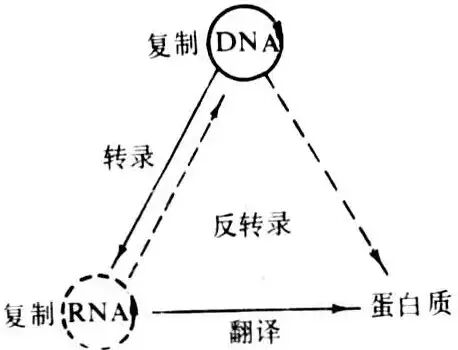
A simple explanation is that DNA records all genetic information. Through transcription, part of this information is used to generate mRNA. Then, based on the information carried by this mRNA, proteins are synthesized, which ultimately carry out various life activities.
Here's an analogy: DNA can be thought of as the complete set of architectural blueprints for the Forbidden City, recording how every building is constructed. Transcription is like finding the construction method for a specific house from this complete set and copying it down. Then, using this copied content, the specific room is built.
The above image illustrates the classic Central Dogma, which isDirect and Pronounced in prokaryotes.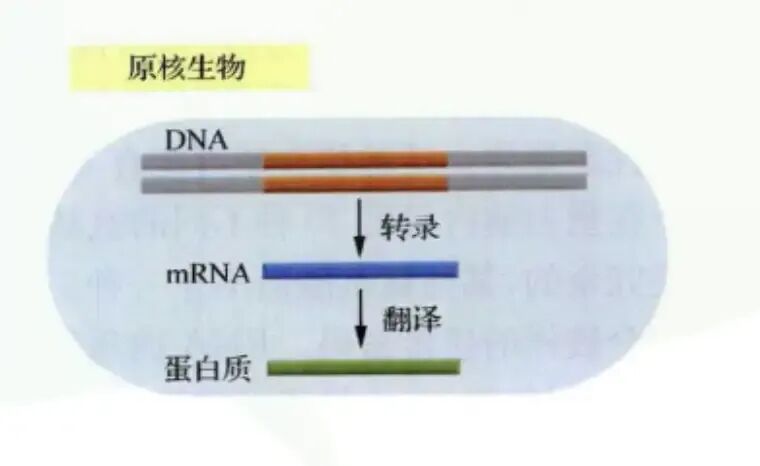
This is also part of what is taught in high school biology.
However, in eukaryotes, this relationship becomes more complex.
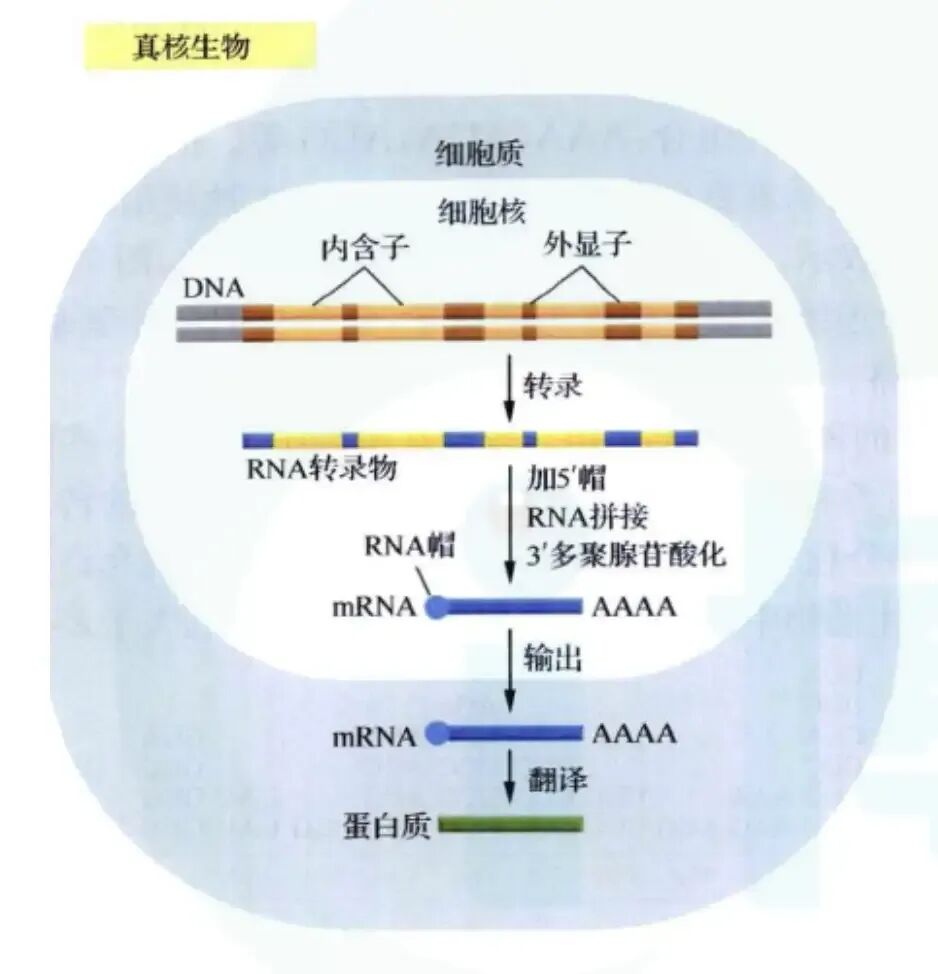
Although complex, it still follows the core steps of the Central Dogma: from DNA to mRNA, and finally to protein.
But I wonder if you've ever been puzzled: we humans are far more complex than the Forbidden City. Every cell in our body contains DNA with the full set of genetic information. So, how do we grow from a single-celled fertilized egg into such a complex multicellular organism?
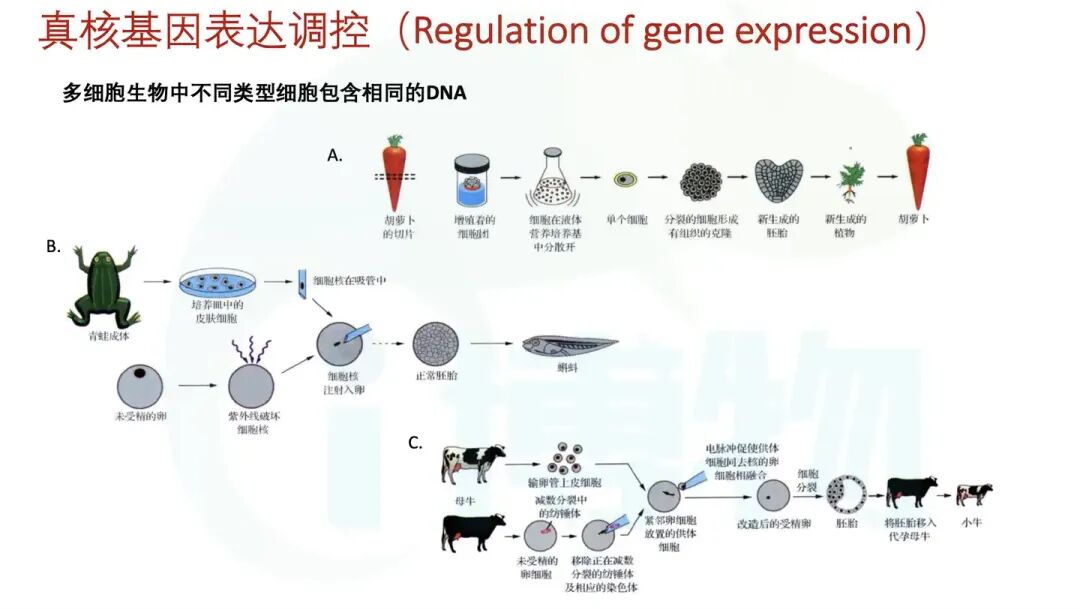
This involves the concept of Gene Expression Regulation.
Gene expression regulation is a core concept in biology, referring to how cells control when, where, and to what extent their genes are expressed. For eukaryotes, the regulatory mechanisms are very complex, involving multiple levels of regulation, including genomic, transcriptional, post-transcriptional, translational, and post-translational levels.
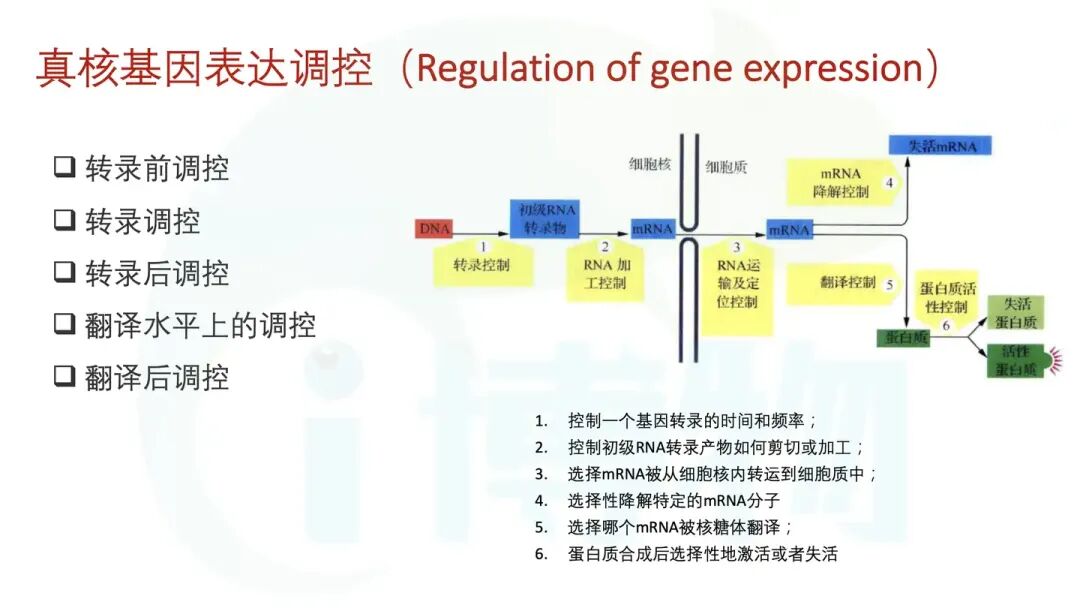
The processes involved here are numerous and complex, going far beyond high school biology. As shown in the figure above, eukaryotes undergo different regulatory mechanisms at various stages of gene expression, allowing us to differentiate from one cell into a multicellular organism with complex functions.
This year's Nobel Prize-winning topic, microRNA, belongs to the "non-coding RNA regulation" part within the "mRNA stability and degradation" section (step 4 in the diagram). It acts by partially complementing with mRNA, leading to translational repression or mRNA degradation.
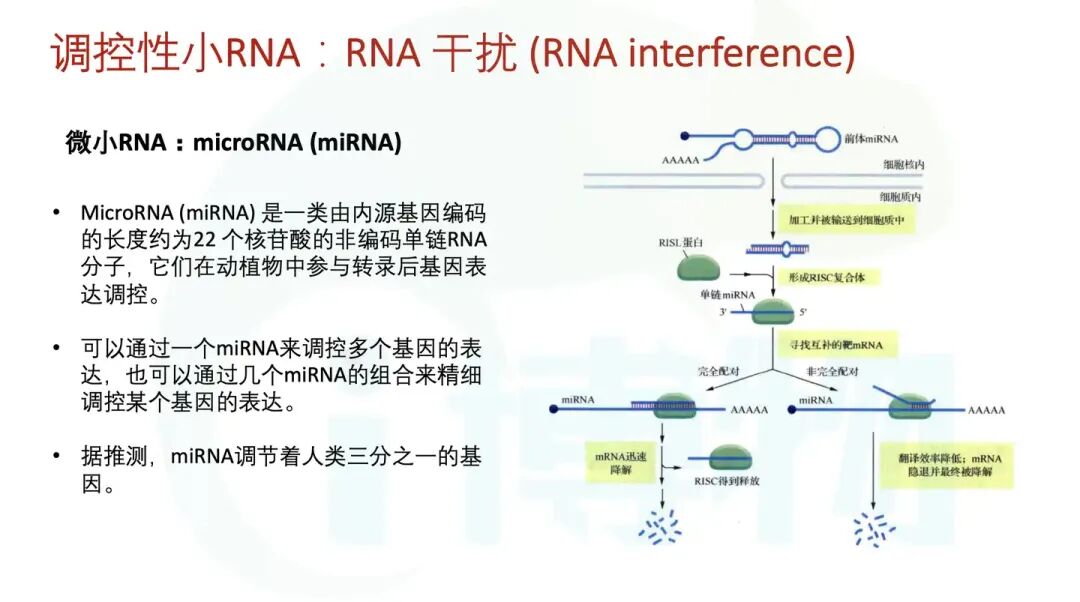
In class, the professor clearly stated that microRNA is definitively categorized under RNA interference.
If we really want to get into the details, we need the next slide.
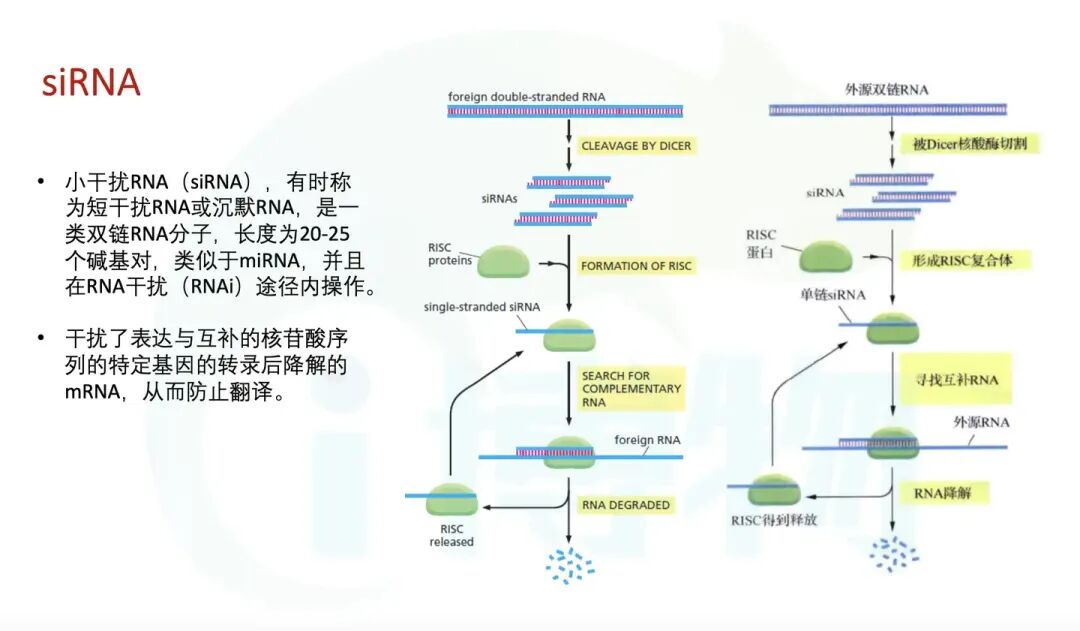
The 2006 Nobel Prize for RNAi focused more on the field of siRNA research. It also involves siRNA binding to the RNA-induced silencing complex, leading to degradation of the target mRNA.
A question often asked in class is: "Teacher, what is the difference between microRNA and siRNA?"
Mechanistically, there are some differences.
siRNA is typically derived from exogenous or endogenous double-stranded RNA. The dsRNA is cleaved by the Dicer enzyme into siRNA. siRNA binds to RISC, leading to degradation of the target mRNA.
Its primary outcome is mRNA degradation, thereby inhibiting gene expression.
microRNA, on the other hand, is generally encoded by endogenous genes, producing primary microRNA, which is then processed by the Drosha and Dicer enzymes. microRNA binds to RISC and, through partial complementarity with the target mRNA, causes translational repression or reduced mRNA stability.
Its action is more subtle, usually regulating the level of gene expression rather than completely shutting it off.
From a biological function perspective,siRNA is considered part of antiviral defense mechanisms and maintains genome stability. It is widely used in gene function research as a tool to inhibit the expression of specific genes.
microRNA plays key roles in developmental processes, cell differentiation, and cell fate determination. It has important influences on various physiological and pathological processes, including cancer and cardiovascular diseases.
In essence, siRNA is more focused on exogenous origins and maintaining stability, while microRNA is primarily endogenous and focused on regulation.
However, in terms of application fields, they both belong to the category of small nucleic acid drugs. This category mainly includes antisense oligonucleotides, shRNA, siRNA, miRNA, etc.
The small nucleic acid drugs we studied previously were mainly siRNA-based therapeutics. The core principle is also to inhibit the expression of specific genes to achieve various effects.
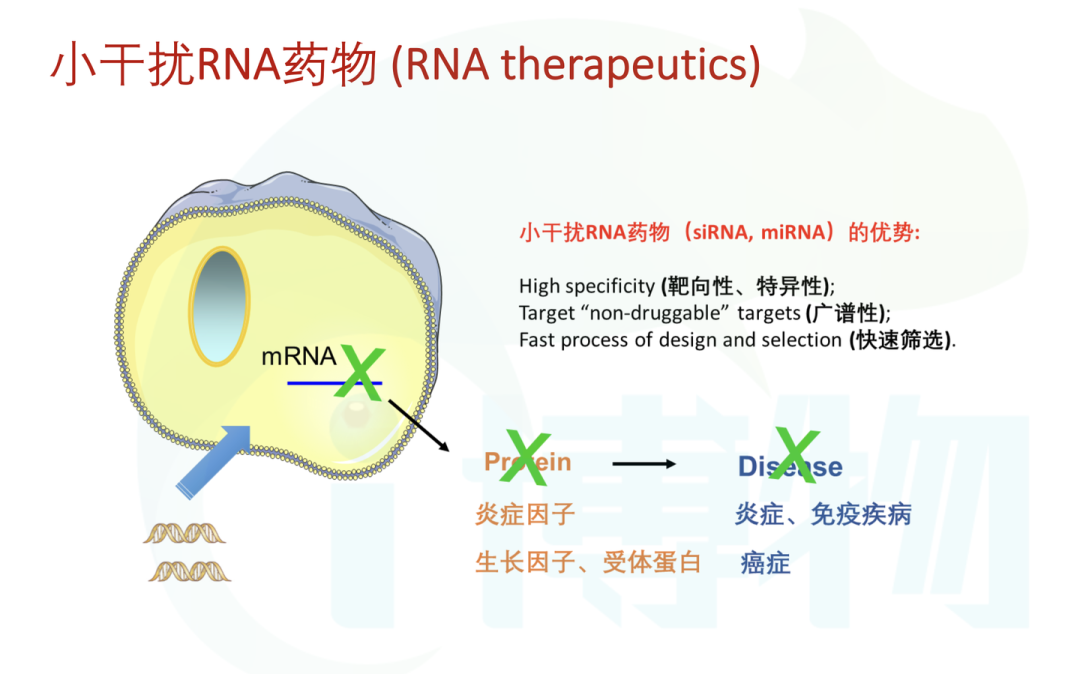
Similarly, the development of microRNA drugs also follows the path of siRNA, primarily focusing on inhibition.
However, research in the last decade has discovered that microRNA doesn't only have inhibitory effects. When miRNA is located in the cytoplasm, it can block mRNA translation, exerting a negative regulatory role. When located in the nucleus, by binding to enhancers and altering their chromatin state, it can activate gene transcription.
This means microRNA can have a dual regulatory capability: increasing or decreasing expression. The discovery of this mechanism has helped clarify the causes of many cancers. In some cancers, low expression of specific microRNAs is an important factor. Scientists found that injecting microRNA into cancer mice to increase microRNA expression can effectively inhibit the growth of specific tumors.
Does this sound exciting? Students in our lab also have the opportunity to engage in this series of learning and experimental activities. If you're interested, seize the final chance to sign up!
【Dates】 December 23, 2024 - December 30, 2024
January 18, 2025 - January 25, 2025
【Number of Participants】 5-8 students
【Recommended Grade Level】 Grade 9 and above
【Instructor Team】 The teaching team consists of frontline researchers from a National Key University's Key Laboratory, with professors delivering instruction personally.
For details, please contact the iBOWU Course Advisor.
Course Advisors:
Teacher Zhang: 13910908618 (WeChat ID same as phone number)
Teacher Zha: 13910312020 (WeChat ID same as phone number)
About iBOWU · JSR Academy
JSR Academy is the first junior science academy initiated by non-governmental forces in China. Launched by iBOWU, a well-known platform in China for providing scientific research and academic programs for youth, its aim is to offer high-quality scientific practice platforms for Chinese teenagers.
JSR Academy has received investment from BGI Group, TAL Education Group, and Poly Group. Leveraging strong scientific and capital backing, JSR Academy has gathered dozens of multidisciplinary frontline scientists globally, along with resources from joint laboratories at dozens of universities and research institutions across countries including China, the USA, Denmark, Norway, Singapore, and Australia. It is dedicated to providing students with high-end, advanced STEM academic programs and elite training plans, striving to cultivate the scientific spirit among Chinese youth and contribute to the reserve of scientific and technological talent for China and the world.



